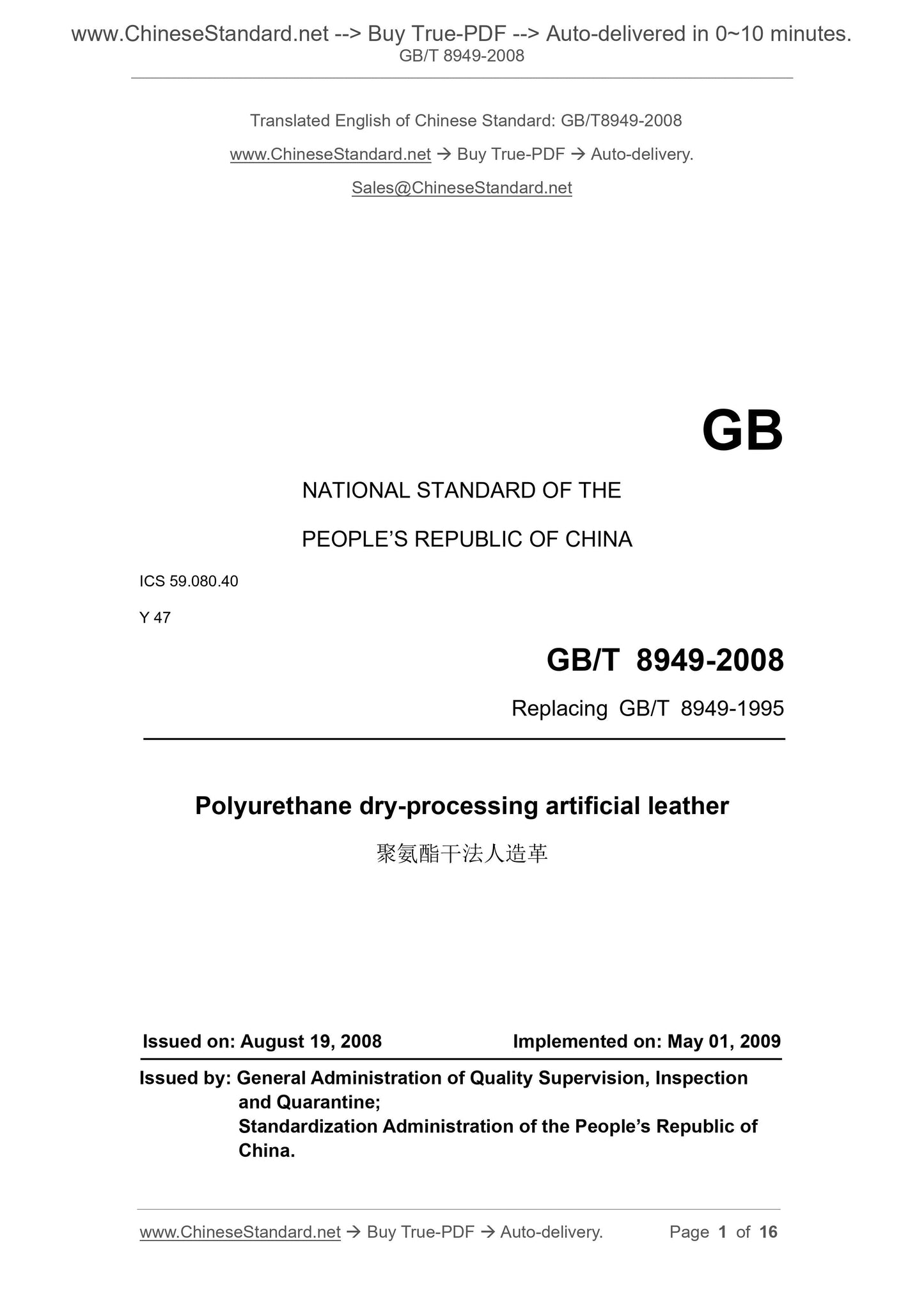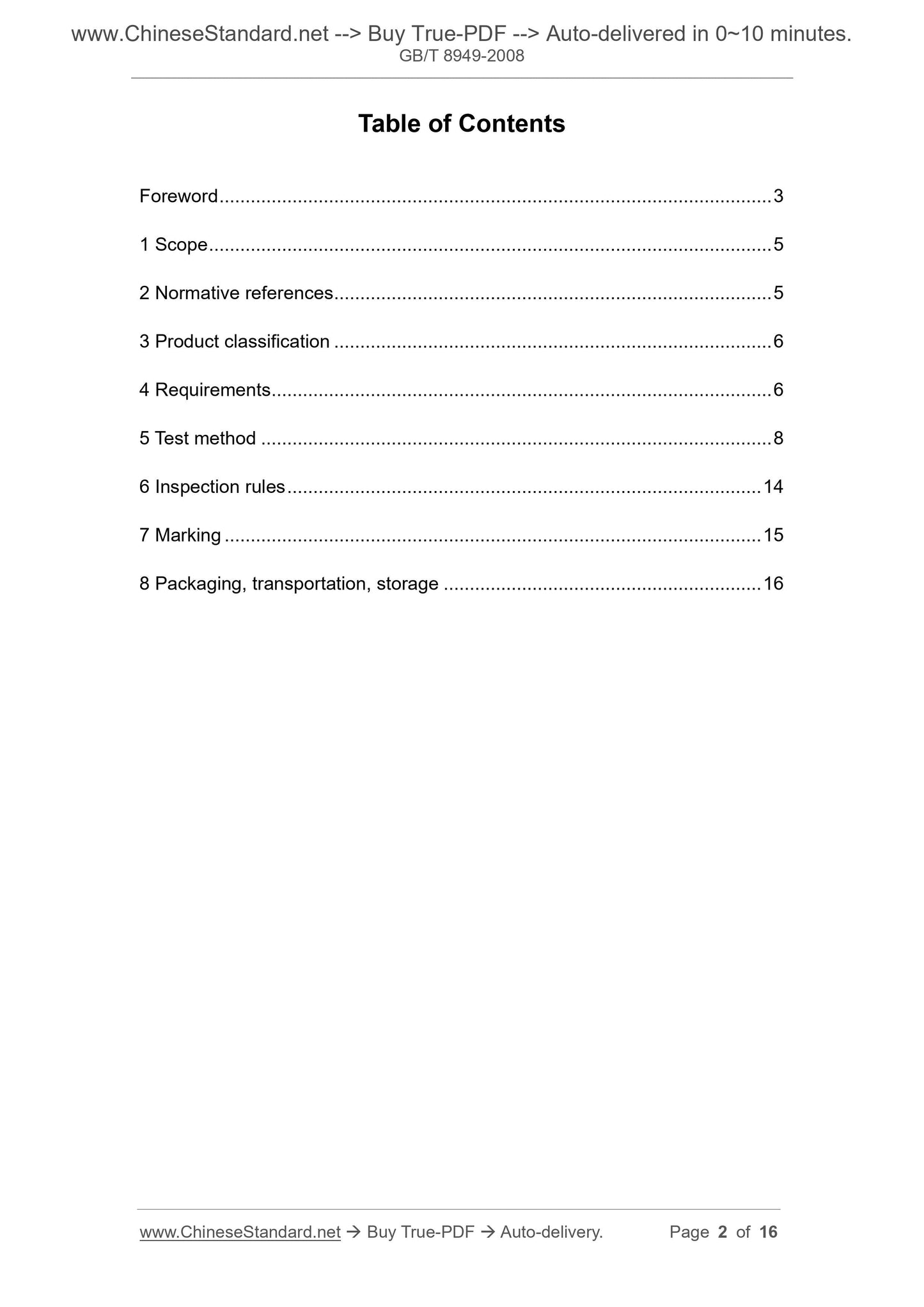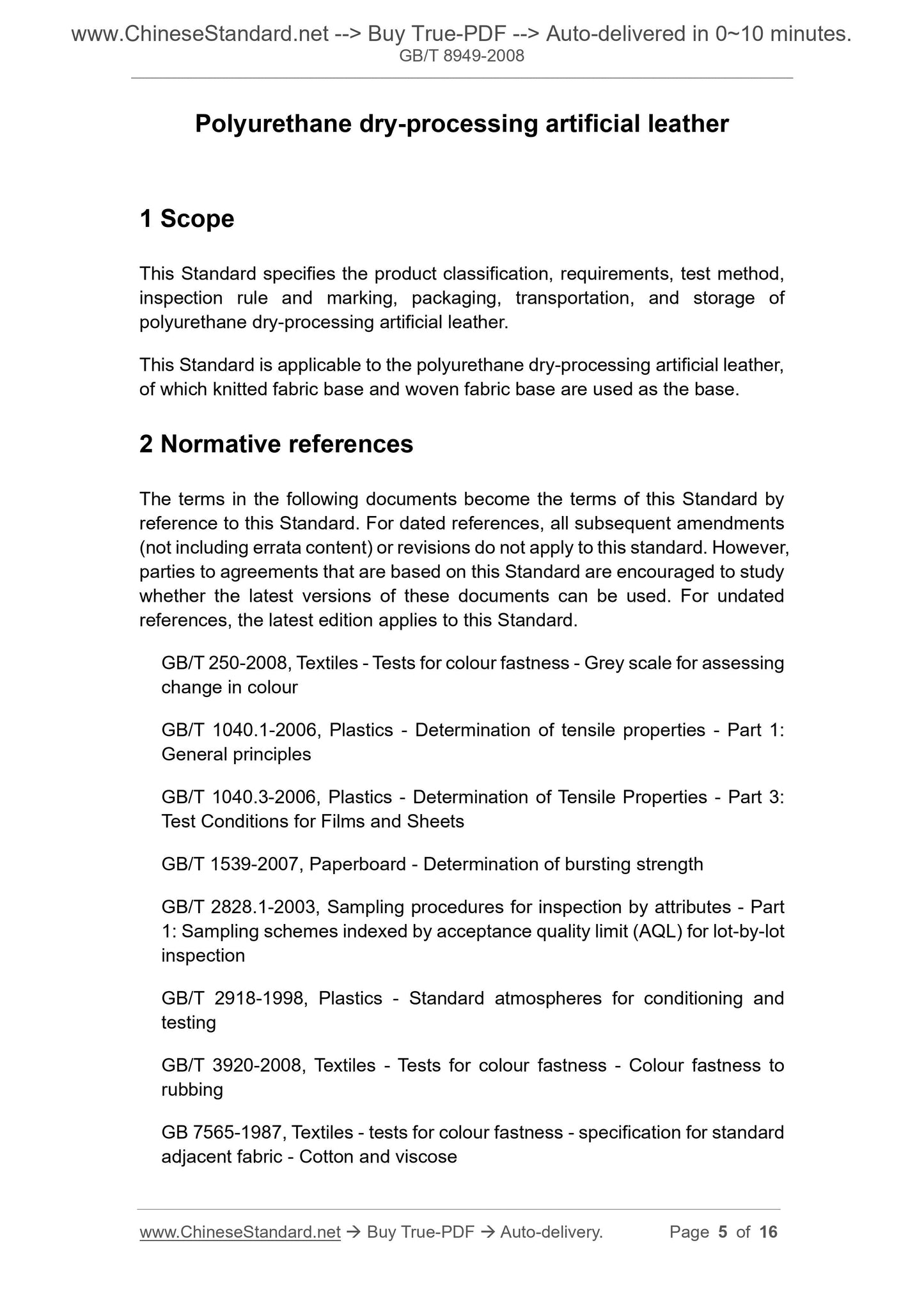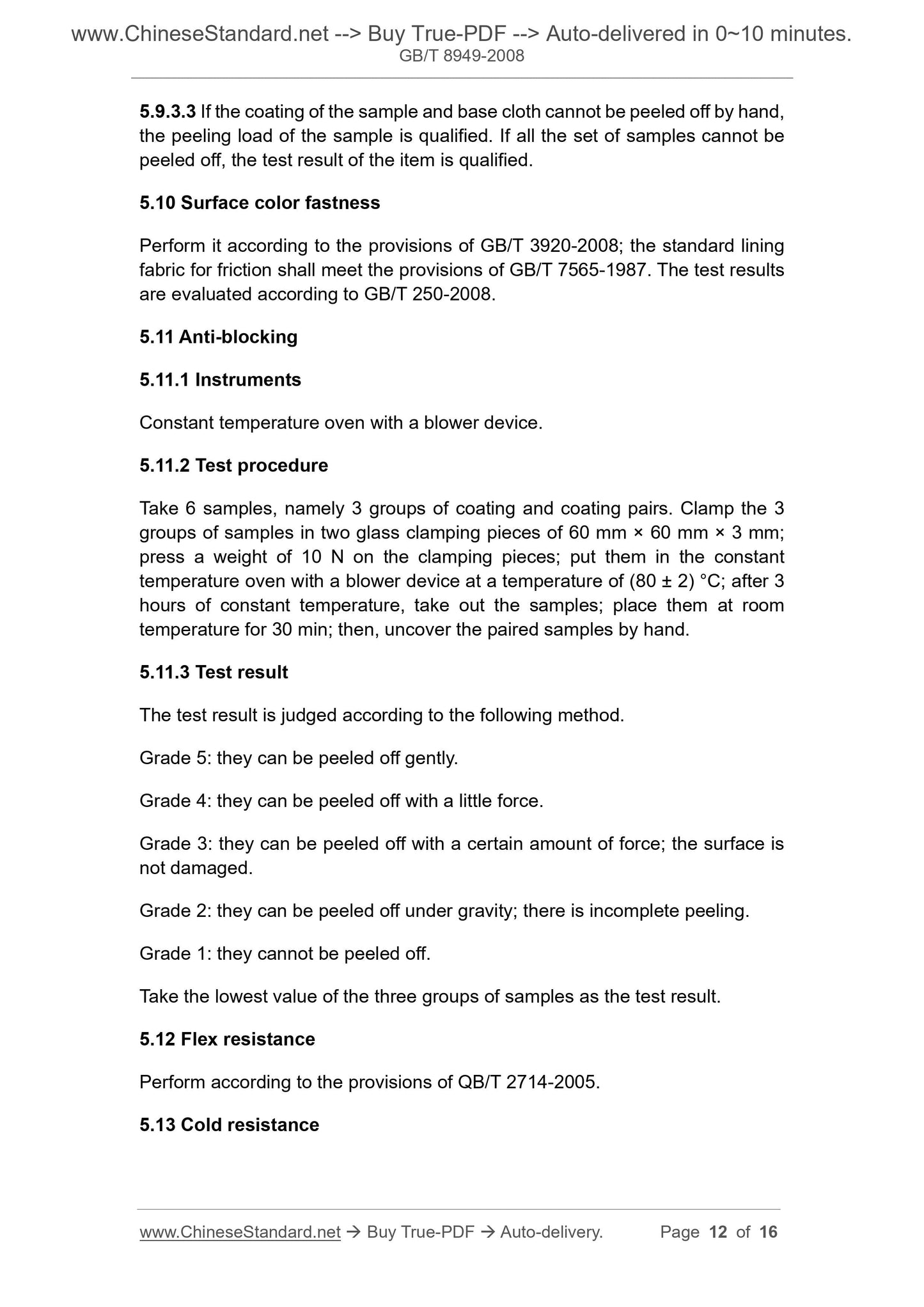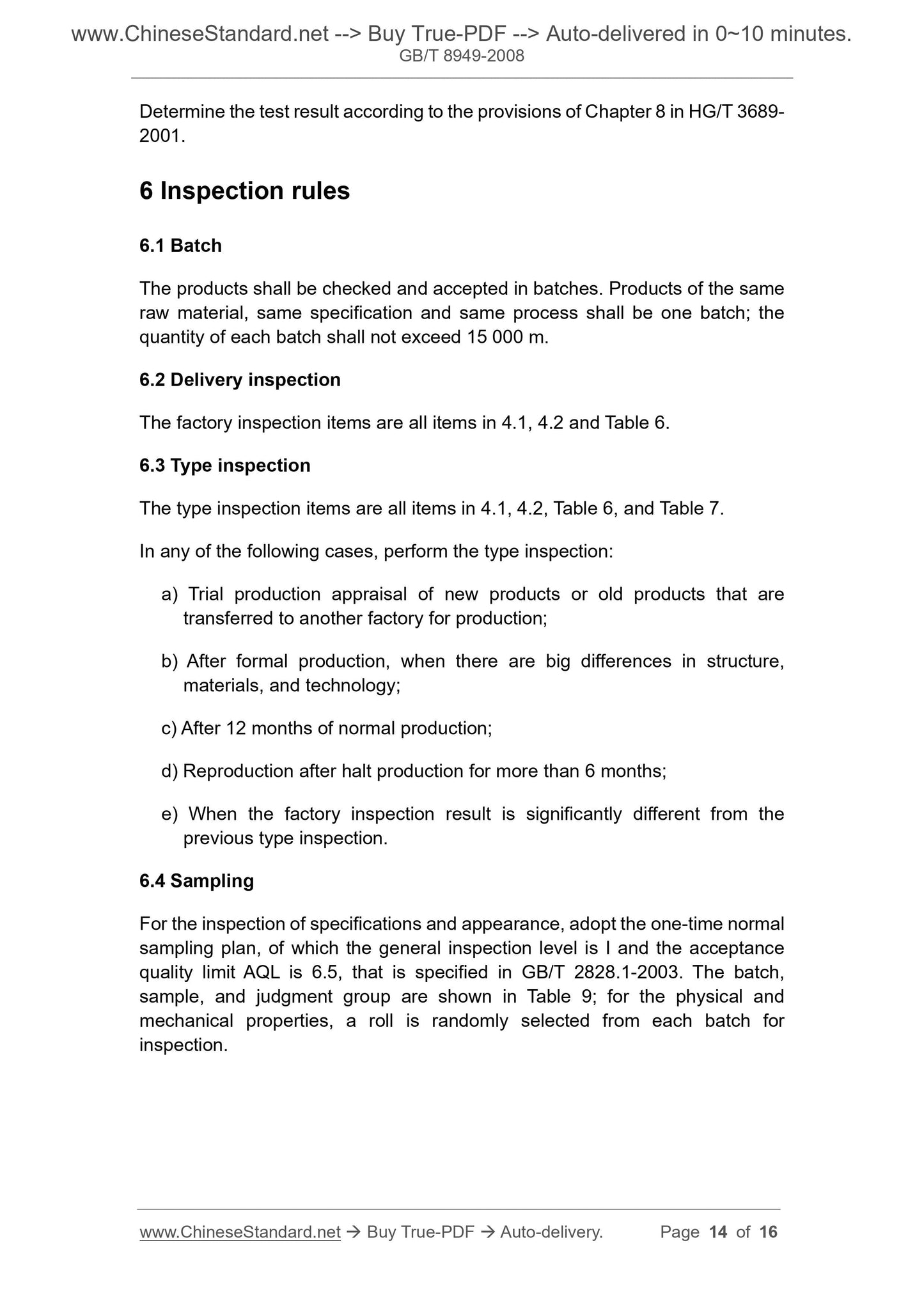1
/
of
6
www.ChineseStandard.us -- Field Test Asia Pte. Ltd.
GB/T 8949-2008 English PDF (GB/T8949-2008)
GB/T 8949-2008 English PDF (GB/T8949-2008)
Regular price
$160.00
Regular price
Sale price
$160.00
Unit price
/
per
Shipping calculated at checkout.
Couldn't load pickup availability
GB/T 8949-2008: Polyurethane dry-processing artificial leather
Delivery: 9 seconds. Download (and Email) true-PDF + Invoice.Get Quotation: Click GB/T 8949-2008 (Self-service in 1-minute)
Newer / historical versions: GB/T 8949-2008
Preview True-PDF
Scope
This Standard specifies the product classification, requirements, test method,inspection rule and marking, packaging, transportation, and storage of
polyurethane dry-processing artificial leather.
This Standard is applicable to the polyurethane dry-processing artificial leather,
of which knitted fabric base and woven fabric base are used as the base.
Basic Data
| Standard ID | GB/T 8949-2008 (GB/T8949-2008) |
| Description (Translated English) | Polyurethane dry-processing artificial leather |
| Sector / Industry | National Standard (Recommended) |
| Classification of Chinese Standard | Y47 |
| Classification of International Standard | 59.080.40 |
| Word Count Estimation | 11,160 |
| Date of Issue | 2008-08-19 |
| Date of Implementation | 2009-05-01 |
| Older Standard (superseded by this standard) | GB/T 8949-1995 |
| Quoted Standard | GB/T 250-2008; GB/T 1040.1-2006; GB/T 1040.3-2006; GB/T 1539-2007; GB/T 2828.1-2003; GB/T 2918-1998; GB/T 3920-2008; GB 7565-1987; QB/T 2714-2005; HG/T 2-162-1965; HG/T 3689-2001 |
| Regulation (derived from) | National Standard Announcement 2008 No.14 (Total No.127) |
| Issuing agency(ies) | General Administration of Quality Supervision, Inspection and Quarantine of the People's Republic of China, Standardization Administration of the People's Republic of China |
| Summary | This standard specifies the polyurethane dry leather product categories, requirements, test methods, inspection rules and signs, packaging, transport and storage. This standard applies to knitted cloth and woven cloth as substrate by dry polyurethane coated leather manufacturing process. |
Share
